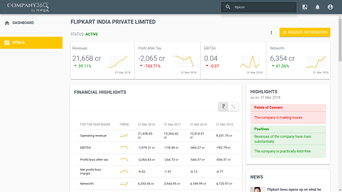Revenue
What is revenue?
Revenue refers to the income of a company that it receives from its day-to-day business operations. On the income statement, revenue is also referred to as sales. Revenue is made largely by the sale of goods and services. There are also other ways of making revenue such as from dividends, interest, royalties paid to other businesses, and more.
Primarily, the revenue made by a business represents its gross income. The amount covers any refunds or discounts made in the period. Based on the accounting system utilized, there are various ways of measuring revenue.
Revenue is listed in the financial statement at the top of the profit and loss statement right above the expenses listed. The reason why profit and loss statements are constructed in such a manner is that it makes it easier to evaluate the net income. Revenue deducted from the expenses equals net income.
Key highlights:
- Revenue is one of the major components of the income statement.
- Whenever a company records top-line growth, the company experiences an increase in revenue or gross sales.
- A business can choose to record its revenues based on any of the popular accounting methods.
- Revenue and net income are useful in estimating the financial strength of a company and cannot be used interchangeably.
- Revenue of the company indicates how effective it is at generating sales and it does not take into account the operating efficiencies which can have a dramatic effect on the bottom line.
Types of Revenues:
There are primarily two kinds of revenue a business might receive: Operating and non-operating revenue.
-
Operating revenue
Operating revenue is what you receive from the main activities of your business such as sales. For instance, if you are selling software, then the operating revenue of your business comes from selling your software.
Non-operating revenue is the money earned from the side hustle that is not entirely related to your day to day business activities. It covers profits from investments, dividend income, and other gains made by a company. It is an inconsistent form of revenue in comparison to the operating revenue. You can always make sales frequently but you cannot make money consistently from side ventures.
-
Non-operating revenue
Non-operating revenue is listed just under the operating revenue on the profit and loss statement. If you want to compare the revenue of your business from period to period, then you need to look at your operating revenue. This will provide you an idea of whether your company is progressing or declining in sales.
Types of non-operating revenue:
Non-operating revenue can be considered to be passive company revenue. The money earned falls outside the core offerings of a business. Here are the different kinds of non-operating revenue.
-
Rent
Unless you run a business of renting out properties, the income generated from rent is considered to be non-operating revenue.
-
Interest
If your company has any investments, then the interest being earned would be considered to be non-operating revenue.
-
Dividends
Dividend revenue is yet another kind of non-operating revenue. If a company holds stocks in other business that pays a dividend at regular intervals, then the income generated would be considered to be non-operating.
-
Royalties
Royalty revenue is earned with another individual or business that makes money off the goods and services that you are offering. If you are in a domain where you make money through royalties, then you need to ensure that your offering is protected so that you actually receive what you are entitled to.
Importance of revenue streams:
-
Revenue is a key performance indicator
Revenue analysis helps an analyst to analyze the performance of a company. An analyst has to recognize different revenue streams from which a company is generating cash and also interpret revenue figures from financial statements. The annual revenue reflects the sales made by the company.
-
Performance prediction varies between different revenue streams
Sales revenue is a more predictable income for a business as it is expected that the cash inflow remains the same when the customer base is stable for a company. Service revenues and those that are transaction-based tend to fluctuate based on customer demand. Hence, it is difficult to foresee revenue generation in such cases.
Seasonality is a major factor that influences the variability in the sales of goods and services. Also, project revenue is more volatile and risky as it is largely based on customer relationships. Furthermore, businesses have to invest considerable time and resources in maintaining this source of revenue.
Understanding the concept of revenue allows a financial analyst to study the patterns of cash inflows for a business. Doing so will help them quickly observe unusual patterns in the revenue trend and figure out the cause for the same.
How to estimate revenue?
The formula to calculate revenue entirely depends on what kind of business you can take into consideration during the evaluation. For instance, if you are studying a business with main revenue flowing from product sales, then you can take the average price at which the goods are sold and then multiply it with the total number of products sold.
Revenue = Number of units sold * average price of the unit
When the calculation is being done for service companies, then the value of all service contracts or the number of customers is simply multiplied by the average price of the services.
Revenue = Number of customers * average price of the service
In Summary:
Estimating a company’s revenue is a straightforward process. Analysts can get a better understanding of the revenue generation of a company by studying its income statement. Both net income and revenue are useful in estimating its financial strength and to understand where it actually stands.
Company360 plans

Know more about your vendors, clients and competitors.
Financials, scores, ratios, excels, reports and more.
@ INR 9000/quarter